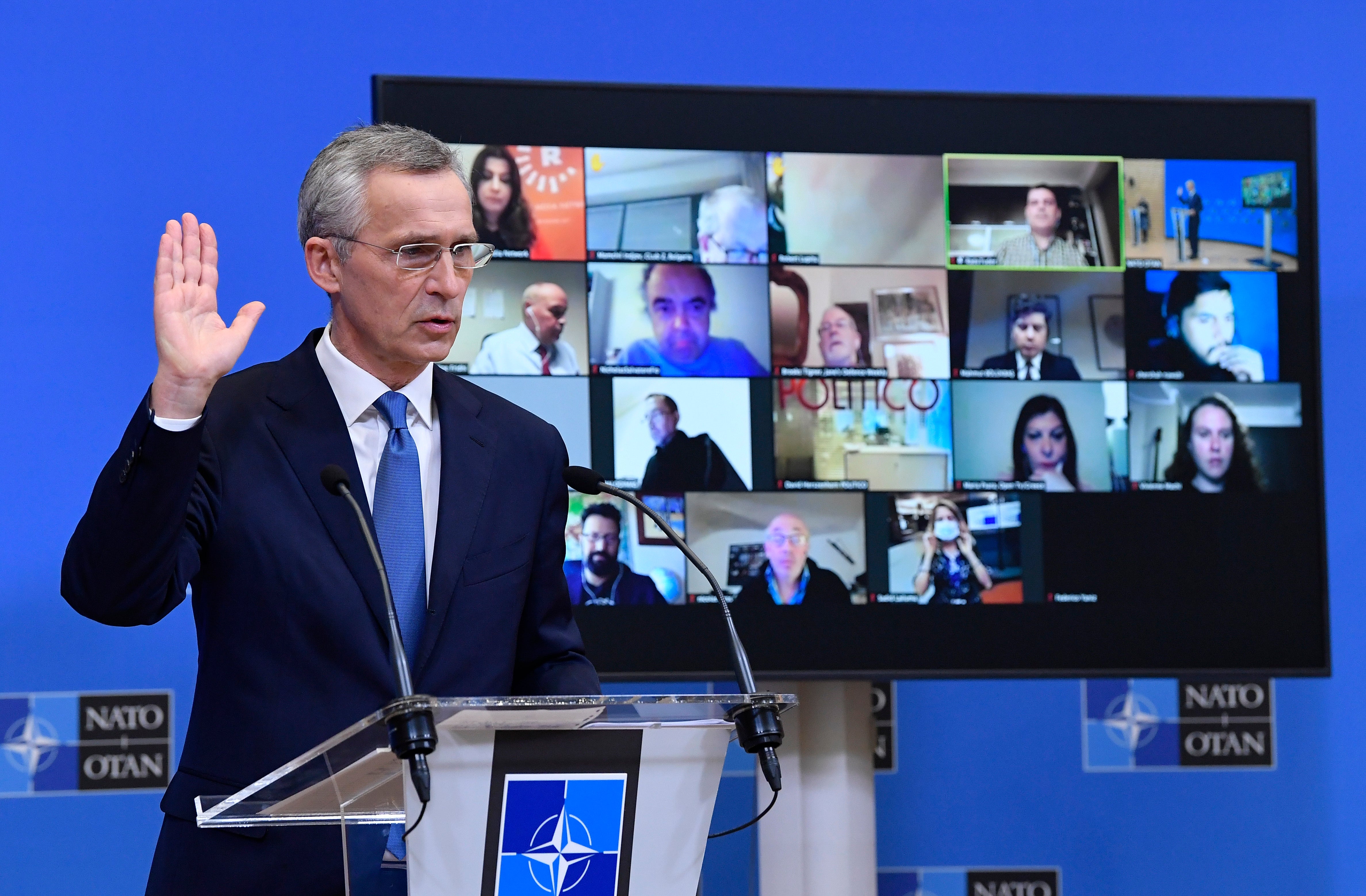NATO chief dismisses early pullout of Afghan troop trainers
NATO Secretary-General Jens Stoltenberg says the military alliance will only leave Afghanistan when security conditions allow

Your support helps us to tell the story
From reproductive rights to climate change to Big Tech, The Independent is on the ground when the story is developing. Whether it's investigating the financials of Elon Musk's pro-Trump PAC or producing our latest documentary, 'The A Word', which shines a light on the American women fighting for reproductive rights, we know how important it is to parse out the facts from the messaging.
At such a critical moment in US history, we need reporters on the ground. Your donation allows us to keep sending journalists to speak to both sides of the story.
The Independent is trusted by Americans across the entire political spectrum. And unlike many other quality news outlets, we choose not to lock Americans out of our reporting and analysis with paywalls. We believe quality journalism should be available to everyone, paid for by those who can afford it.
Your support makes all the difference.NATO Secretary-General Jens Stoltenberg said Wednesday that the military alliance will only leave Afghanistan when security conditions allow, as a deadline for withdrawing troops set out in a peace deal with the Taliban nears.
NATO has just under 10,000 troops in the war-ravaged country helping to train and advise the Afghan security forces. Most of them are not U.S. forces, but the allies could not continue the NATO operation if American transport, logistics and other support are withdrawn.
President Joe Biden is reviewing his predecessor’s 2020 deal with the Taliban, which includes a May 1 deadline for a final U.S. troop withdrawal. In Washington, calls are mounting for the U.S. to delay the final exit or renegotiate the deal to allow the presence of a smaller, intelligence-based American force.
Violence is spiking and culprits include the Taliban, the Islamic State group, warlords and criminal gangs.
“Our presence in Afghanistan is conditions based, and Taliban has to meet their commitments,” Stoltenberg told reporters after chairing a meeting of NATO defense ministers, including new U.S. Defense Secretary Lloyd Austin.
“The main issue is that Taliban has to reduce violence, Taliban has to negotiate in good faith and Taliban has to stop supporting international terrorist groups like Al Qaeda,” Stoltenberg said.
“We will only leave when the time is right and the focus now is how we can we support the peace talks,” he said, referring to slow-moving negotiations between the Taliban and the Kabul government, which began last year in Qatar.
None of the 30 NATO member governments has publicly argued that security conditions are right for a withdrawal, and several allies would probably support a longer stay if the U.S. requests it.
The defense ministers are due to discuss Afghanistan more broadly on Thursday. But with the U.S. review ongoing it’s unlikely that any firm decision on the future of NATO’s operation will be made. That could come when foreign ministers next meet, in mid-March.
NATO took control of international security operations in Afghanistan in 2003, two years after a U.S.-led coalition ousted the Taliban for harboring former Al Qaeda leader Osama bin Laden. It’s the military alliance’s longest, costliest, and most ambitious operation ever.